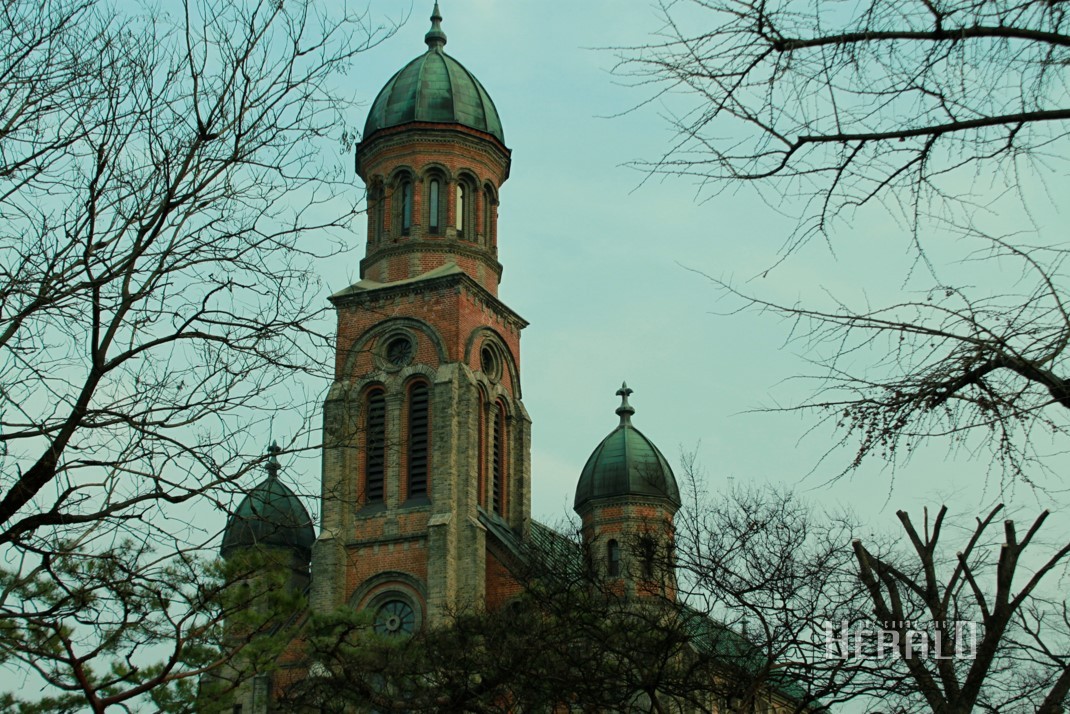In the 21st century, many tend to forget the beauty of ancient architecture and buildings and focus on establishing newer buildings. It is our responsibility to preserve traditional culture for our descendants, but the reality is not quite like this. So, to wake ourselves up and explore the traditional beauty of Korea, let’s visit Jeonju. Starting off with the traditional Korean architecture Han-ok and the Korean traditional clothes Han-bok, Jeonju allows visitors to feel like they are the kings and queens of ancient times. These traditions reflect the greatness of Korean history. Moreover, countless choices of food that are available in Jeonju is the reason why travelling in Jeonju is known as “Food Travel.”
Way to Destination:
Sang-do Station -> Gangnam Express Bus Terminal, Ho Nam Line -> Jeonju Express Bus Terminal (around 3 hours: 14,050 won)
Travelling course:
Jeonju Express Bus Terminal -> Jeonju Han-ok Village -> Han-bok rental store -> Kyong-gi Jeon -> Jeondong Catholic Church -> Han-gook House (Korean traditional food) -> Jeonju Express Bus Terminal
Many tourists with Han-bok costumes can be found at Han-ok Village. There are many Han-bok rental stores that are located in the village where they design your costume and hair; such additions will make the tour 200% more enjoyable. The rental fee is around 20,000 won for two hours.
Martyrs’ Memorial at Jeondong Catholic Church

Even if you are not a Catholic, visiting Jeondong Church is a meaningful tourist destination. Built in 1914, after Father Poisnel finished designing it in 1908, gray and red bricks form the oldest and the most delicate Romanesque church architecture in Korea. Three main bell towers with the center one standing high in balance makes the church palatial. Furthermore, magnificent vaults and colorful stained glass inside the church preserves its antique beauty. Many might recognize this church, since not only it is a renowned photo spot, but also it has been used as the location for scenes from many Korean movies. Besides, Jeondong Catholic Church is the first place where the martyrs lost their lives right outside of Pungnammun Gate. Since this place is 288th on the National Register of Historic Places as well as a martyr’s memorial place, avoid being too loud or disturbing.
Location: 200-1 Jeon-dong, Wansan-gu, Jeonju, Jeollabukdo
Operation Time: 09:00~17:00
Beautiful and Scientific Korean Traditional House: Hanok
It is very rare to discover traditional buildings like the Hanok in a busy city like Seoul – however, it is a different story in Jeonju. Jeonju is covered with a traditional Hanok village with both Gyo-dong and Poongnam-dong covering 76,320 m² consisting of more than 700 traditional Hanok. Although we are surrounded with huge apartment districts holding 7,000,000 households, 700 Hanok Village holds a much greater value in the modern society. Hanok Village was constructed after the Protectorate Treaty between Korea and Japan in 1905, to keep Japanese out of the palace. After clearing out the fortress, Korean citizens gathered to live together and formed this huge traditional housing village. Presently, diverse accommodations, and exhibitions at the Jeonju Traditional Wine Museum and Hanok Living Experience Center are available. The heart of Hankok Village is Gyeonggijeon, a shrine built in 1410. It holds the portrait of the founder of Korea’s Joseon dynasty, Yi Seong-gye. Besides, Gyeonggijeon has Traditional Wine Museum where tourists can see how traditional local liquor is made and museums of king’s portraits. Present Gyeonggjijeon has simple structure, unfortunately because Japanese brought down most of the west site annex for their primary school construction.
Location: Gyo-dong, Wansan-gu, Jeonju, Jeollabukdo
Number: 063-282-1330
Operation Time: 00:00~24:00
Price: free & 2,000won for Gyeonggijeon
Taste the Genuine Bibimbap
If you were asked, “What is the traditional food in Korea?” what will your answer be? Many will likely answer that question by saying “bibimbap.” After experiencing the beauties of Hanbok and Hanok, it is now time to taste and smell Korea’s most loved traditional food. Out of many traditional restaurants that serve bibimbap, the most popular restaurant that was once visited by a famous Korean food TV show “수요미식회”, Han-gook House will be introduced during this tour. Another traditional food that is served in this restaurant is called “yukhoe (Korean-style raw beef) bibimbap.” Many other fresh ingredients, including nuts, are added to this dish, which makes the dish look extremely rich and plentiful. This restaurant is so popular that it has franchise stores that are open in Gangnam, Jamsil, and Apgujeong. If you do not have the time to visit Jeonju, a visit to one of these franchises is recommended.
Location: Han-gook House, 119 Hangook Gil, Wansan-gu, Jeonju, Jeollabukdo
Number: 063-284-2224
Time: 09:30~21:00 (Break time 16:00~17:00); Closed on national holidays
Price: Beef Tartare Bibimbap 13,000 won, Galbi-tang: 11,000 won, Jeonju Bibimbap 11,000 won
Original Handmade Choco Pie
First established in 1951, Poong Nyeon Bakery, or also known as PNB, has continued to serve traditional bakery for three generations. A consistent method to baking, including a fixed set of ingredients used, a uniform degree of baking time and temperature, are the reasons why PNB bakery is still loved in today’s time. Furthermore, PNB bakery offers traditional rice-crackers (senbei) that was sold back in the Japanese colonial era; thus, this provides a nostalgia for the consumers of the past which makes the rice-crackers more valuable. Many tourists tend to buy both choco pie and senbei from this store. It is important to keep in mind that choco pie has to be eaten within one week at room temperature, and senbei has to be eaten within three or four weeks in the refrigerator.
Location: 61-1 Eunhang Ro, Gyo-dong, Wansan-gu, Jeonju, Jeollabukdo
Number: 063-288-7300
Time: 08:30~22:00
Price: Real Whole Wheat Choco Pie: 2,000 won

